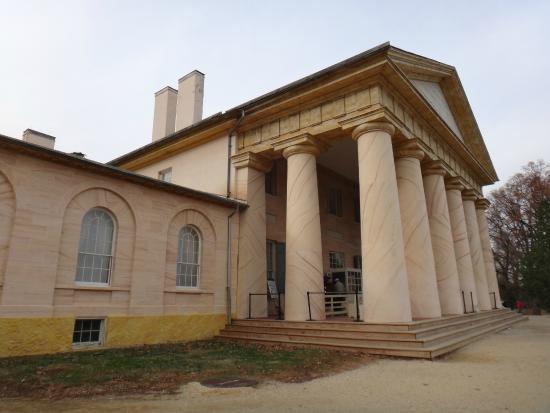Table Of Content

E. B. Stuart, who along with Lee were critical to the Confederacy's battlefield success.[1][2] In spite of his successes, his two major strategic offensives into Union territory both ended in failure. Lee’s executorship of Arlington House brought his first brush with national attention. The will stipulated that Lee manumit (free) the enslaved families within five years. However, several enslaved people attested that Custis had promised them immediate manumission, upon his death.[3] The controversy revived in 1859 when three enslaved people escaped because of Lee’s increased work demands and his refusal to grant immediate manumission. Lee had the three freedom seekers apprehended and returned to Arlington House. During the period of increasing abolitionist sentiment, the story drew national attention as evidence of Southern slaveholding brutality and the continuation of enslavement for the full five-year period.

Explore the National Park Service
But the Union effort on September 17 was badly executed and its numerical superiority never fully exploited. Lee was able to thwart disaster by adroitly shifting forces to meet each of the violent contests that raged along Antietam Creek. But the arduous march north was poorly outfitted, and the men arrived in Maryland weakened by hunger and diminished by a high rate of desertion and straggling. (By some estimates Lee lost a third of his army.) Greeted without the expected enthusiasm, for the first time they suffered the disadvantage of being on hostile territory. The invasion had been a high-stakes gamble, but Lee increased the odds against him by again dividing his army, despite his officers’ skepticism.
Family and Military Life
Scott had mentored Lee since the Mexican-American War and considered him the Army’s most talented officer. “You have made the greatest mistake of your life,” Scott responded, “but I feared it would be so.” Two days later, Lee drafted a letter, officially informing Scott of his resignation from the US Army. General Winfield Scott was a native Virginian, but he remained loyal to the Union.
Arlington House, The Robert E. Lee Memorial
Kaine introduces legislation to rename Robert E. Lee Memorial - PotomacLocal.com
Kaine introduces legislation to rename Robert E. Lee Memorial.
Posted: Sat, 24 Jun 2023 07:00:00 GMT [source]
“This is the largest curatorial, or museum project in the history of the parks service,” Aaron Larocca, a park ranger and NPS spokesperson, tells WTOP. The National Park Service (NPS) has reopened the onetime home of Confederate General Robert E. Lee after a major renovation and the addition of new exhibits on the lives of people enslaved there. New exhibits and materials at Arlington House include the enslaved Syphax and Norris families.
At the outbreak of war, Lee was appointed to command all of Virginia's forces, which then encompassed the Provisional Army of Virginia and the Virginia State Navy. He was appointed a Major General by the Virginia Governor, but upon the formation of the Confederate States Army, he was named one of its first five full generals. Lee did not wear the insignia of a Confederate general, but only the three stars of a Confederate colonel, equivalent to his last U.S. Army rank.[108] He did not intend to wear a general's insignia until the Civil War had been won and he could be promoted, in peacetime, to general in the Confederate Army.
Patt Morrison: Confederate sentiment in Southern California ran deeper than you might know
Lee met the court requirements by manumitting the enslaved families of the estate in late 1862. The malaise over slavery followed Lee when he returned to full-time duty in February 1860. As acting head of the Department of Texas he refused to allow that state’s secessionists to wrest federal property from him. As the crisis deepened, however, his thinking became increasingly conflicted. Recalled to Washington, he was promoted in March 1861 to full colonel by the new U.S. president, Abraham Lincoln, and once again swore an oath of allegiance to the United States. A few weeks later, Lee was forced to confront his ambivalence when Virginia seceded and he was offered command of Union forces recruited to protect Washington, D.C.
Inside the far-right plan to use civil rights law to disrupt the 2024 election
George Washington Custis Lee - Arlington House, The Robert E. Lee Memorial (U.S - National Park Service
George Washington Custis Lee - Arlington House, The Robert E. Lee Memorial (U.S.
Posted: Wed, 10 Jan 2024 08:00:00 GMT [source]
After the Seven Days’ Battles, Lincoln placed John Pope in command of a new Army of Virginia, consisting of three corps that already had performed poorly against Confederate general Thomas J. Rightly suspecting that he might now face both McClellan’s and Pope’s armies, Lee initiated an aggressive campaign. Under his orders, Jackson confronted Union general Nathaniel P. Banks at Cedar Mountain on August 9, 1862, to win a narrow victory. Ignoring conventional wisdom, Lee then divided his force, tricking Pope into chasing Jackson, who faked a retreat. After a dramatic march, Jackson lured Pope’s overconfident army into a fierce battle at Manassas Junction on August 28.
How Robert E. Lee’s Home Became Arlington National Cemetery
On April 20, Lee resigned from the US Army, often explaining in letters, “save in defense of my native State, I have no desire ever again to draw my sword.” [5] Days later he accepted a commission as a Virginia general. Confederate president Jefferson Davis gave him control of the Army of Northern Virginia in 1862. After the war, Lee returned to structural engineering until 1852, when U.S. secretary of war Jefferson Davis appointed him superintendent of West Point. He was a careful steward of the academy, but found little opportunity for innovation. His rigid belief in the virtue of “duty” was not appreciated by the cadets, among whom he was unpopular.
This includes the existence of “witness trees” in Arlington Woods and compatible plantings in the kitchen and flower gardens. Views between the flower and kitchen gardens, views from the east side of the house towards Washington, and views along Lee Avenue north to the house and the broader southern view are all reminiscent of their historic appearance. Although Lee was granted parole at Appomattox, his personal fate was uncertain until his citizenship was returned with the amnesty of 1868.
What ensued was the Overland Campaign, some seven weeks of brutal, relentless fighting. The armies first met on May 5 and 6, 1864, in the scrubby woods, known locally as the Wilderness, near the old Chancellorsville battlefield. Lee knew his resources were too limited to force Grant back to Washington, D.C., but he had not expected the Union to push onward after its appalling casualties in a stalemated contest at the Battle of the Wilderness. Some of the heaviest fighting of the war took place the following week near Spotsylvania Court House, particularly around a Confederate breastwork known as the Bloody Angle.
Easily repulsed, Pickett's Charge, named after the general whose division participated, resulted in severe Confederate losses. Lee rode out to meet the remains of the division and proclaimed, "All this has been my fault."[122] He had no choice but to withdraw, and he escaped Meade's ineffective pursuit, slipping back into Virginia. Along with materials telling the stories of the estate’s owners, the refurbished building now includes exhibits and materials on those enslaved there, including the Norris and Syphax families. Per the NPS website, Wesley and Mary Norris were among three enslaved people who fled from Arlington House in 1859, believing that they had been freed by Custis’ will. An account Wesley later provided to an anti-slavery newspaper stated that upon his recapture, Lee ordered him whipped 50 times and had his wounds washed with brine. Throughout the war, the Arlington estate also supported thousands of African Americans fleeing enslavement in the South.

No comments:
Post a Comment